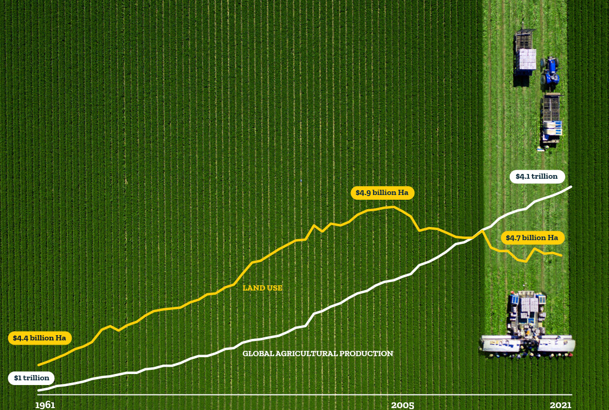The new harvest: more than a food revolution
11 May 2023
For most of human history an inauspicious correlation has existed, an increase in food production required an increase in cultivated land. That correlation is turning as the world produces more food on less land every year through innovation. This highlights why calls to return to falsely romanticised and outdated farming systems must be rejected if we are to meet global Sustainable Development Goals and the human right for food and nutritional security.

Modern agriculture is in the spotlight as it has a big job to do. With nearly 10 billion people to feed by 2050 using less land, water and inputs than ever before, we need to be smarter about how we produce our food. Sustainable intensification is enabling a harmonious balance between urgent priorities – ending hunger, reducing agriculture’s impact on anthropogenic global warming, and restoring ecosystems.
Revolutionary digital technology, innovative seeds and modern crop protection products have significantly improved farming practices over the past 60 years. These innovations continue to change the face of agriculture both here in Australia and globally. Farmers today, with access to these products and innovations, produce food more efficiently, productively and sustainably than ever before.
By improving yield while also reducing inputs, we’re feeding a growing population while protecting natural environments and native habitats. By reducing crop losses, we’re also maximising scarce resources like water, fertilizer, and energy. With a science-based approach to farming policy and practice, the times are changing, for the better. This will be even more important over the next 60 years.
Read more from the Winter 2023 edition of CropLinks here: CropLife Australia | CropLinks Winter 2023